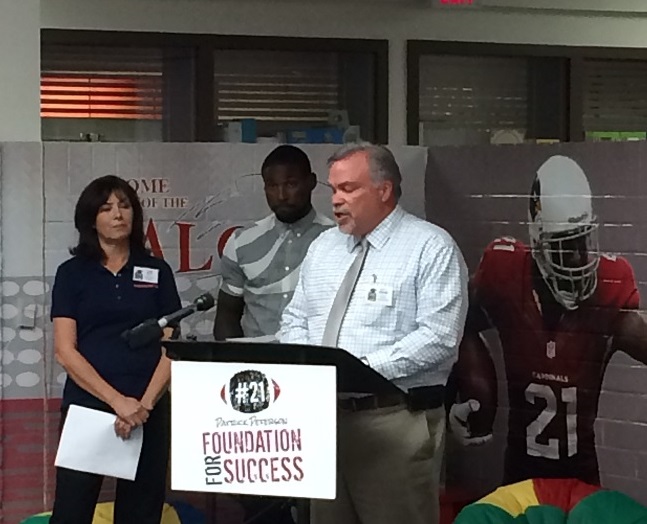
A $5,000 grant from the Sundt Foundation is helping at-risk youth in metro Phoenix develop a lifelong love of learning and reading by giving them better access to books in a fun, supportive environment. The money went to the Patrick Peterson Foundation for Success for its Patrick’s Corner” program, which creates libraries in Title I schools and inner city community centers throughout the Phoenix area.
The nonprofit was founded in 2013 by Arizona Cardinals’ Pro Bowl Cornerback Patrick Peterson. Its mission is to provide low-income and inner city youth with opportunities and resources to reach their full potential.
Marty Hedlund, Sundt Southwest District Manager and member of the Patrick Peterson Foundation for Success executive board, spoke at the ribbon-cutting ceremony last Thursday at Frye Elementary School – which, thanks to the grant, now has its own “Patrick’s Corner.”
“The level of excitement among the kids – to have their own Patrick’s Corner stocked with 1,200 brand new books to read, and then have Patrick himself read a story with two volunteers from the audience – was really special. Foundation for Success, Scholastic Books and the Sundt Foundation should be very proud of this lifelong learning resource now available to these great kids.”
The Sundt Foundation was established in 1999 by Sundt as a way for its employee-owners to give back to the communities in which they work. In addition to funding grants every quarter, the Foundation also sponsors volunteer activities to benefit nonprofit organizations. The grant money comes primarily from contributions made by Sundt employees, which are matched dollar-for-dollar by the company.
Since its inception the Foundation has made grants totaling approximately $6.5 million to hundreds of worthy organizations. Approximately 75 percent of the money goes to help disadvantaged children, with the remaining 25 percent dedicated to community issues. Employees can also earmark their donations for charitable organizations that benefit members of the military and their families.